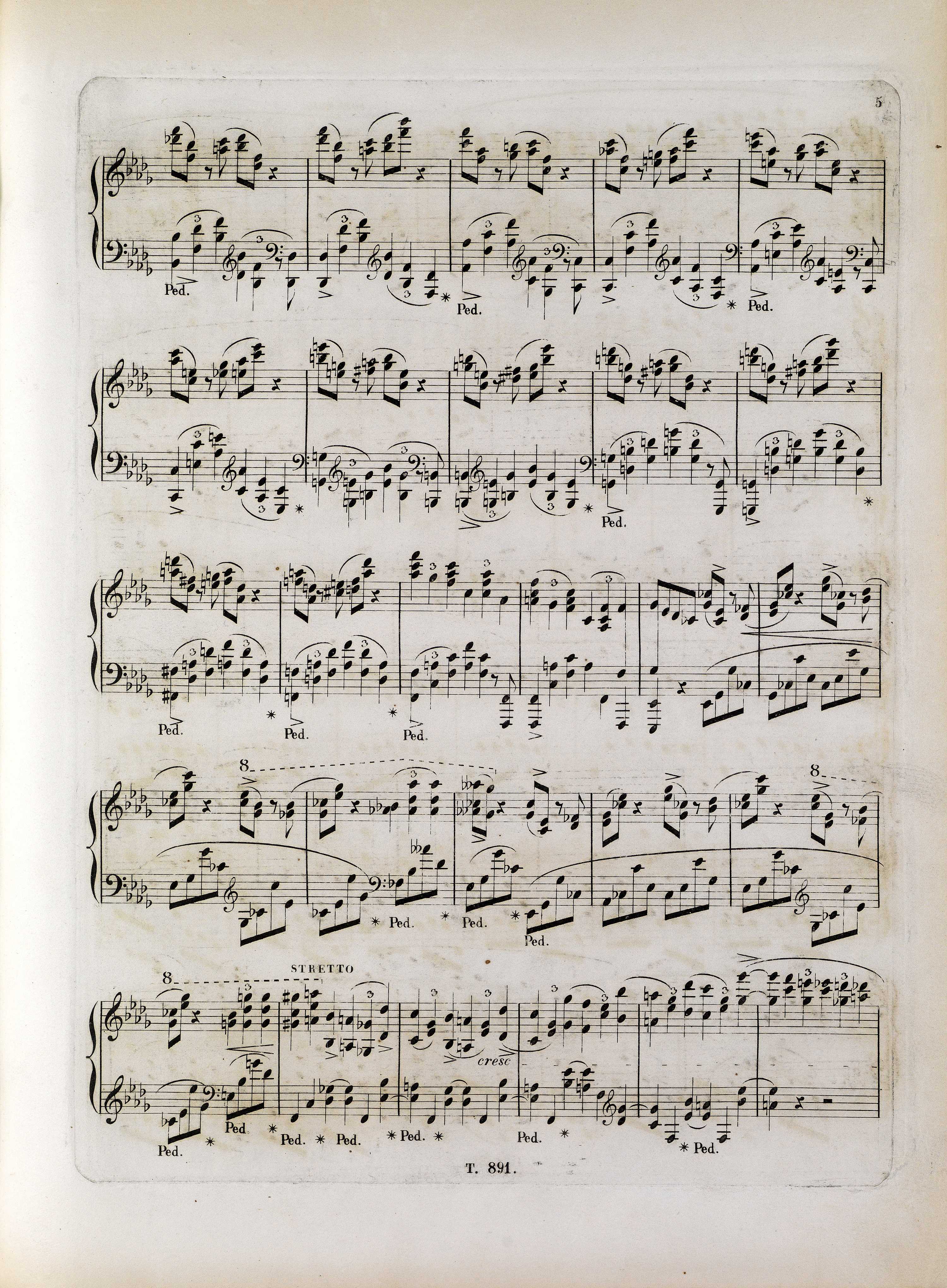



The structure of the figuration in the entire passage in the L.H. (bars 153-156 and 157-160), and particularly the comparison with analogous bar 159, indicate a mistake of the copyist in this place. The absence of a correction in GE may be attributed to the absent  before this note (although in a similar situation four bars later, a
before this note (although in a similar situation four bars later, a  before the respective note – c
before the respective note – c 2 – was added). The sign is absent also in the majority of the sources featuring the note at the correct pitch – it was added only in EE2.
2 – was added). The sign is absent also in the majority of the sources featuring the note at the correct pitch – it was added only in EE2.
Compare the passage in the sources »
category imprint: Interpretations within context; Differences between sources
issues: EE revisions, Accidentals in different octaves, Terzverschreibung error, Errors of GC
notation: Pitch



